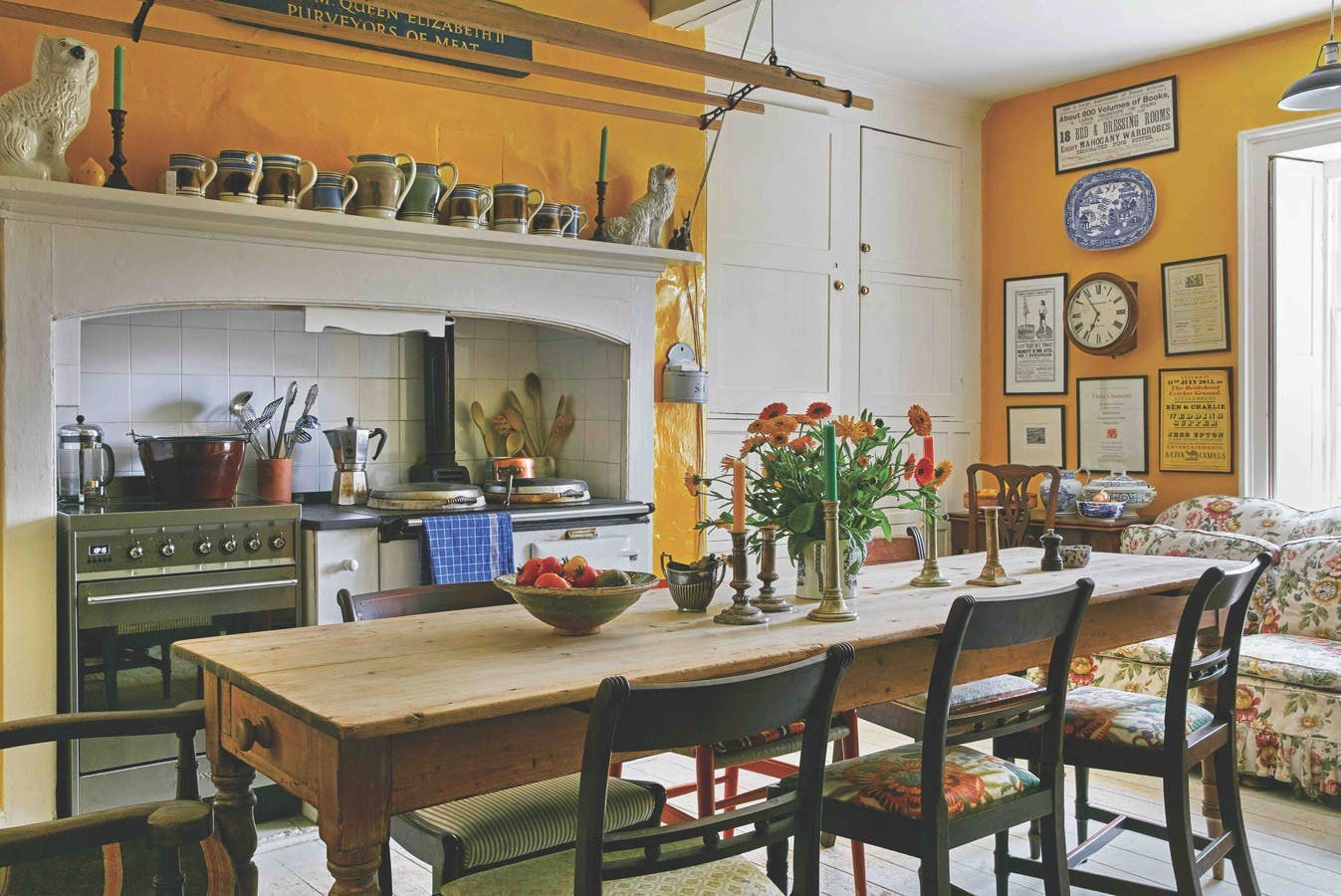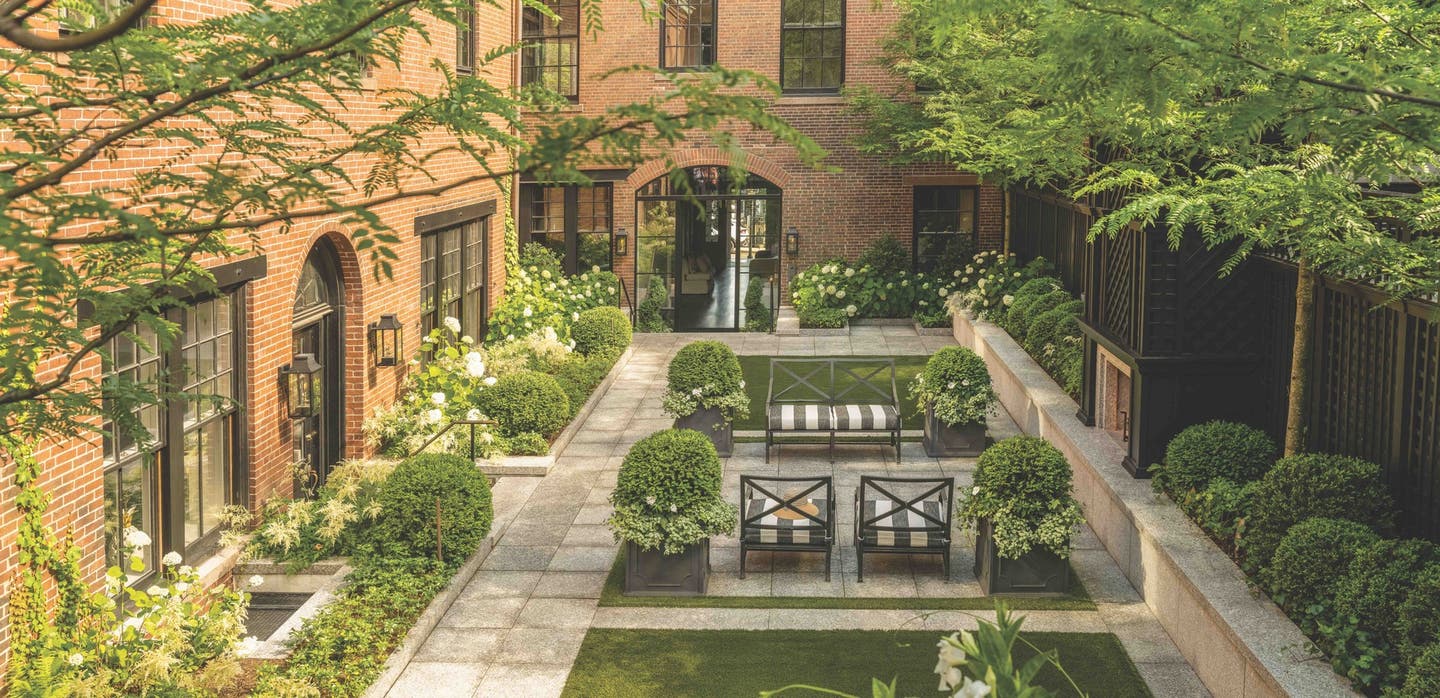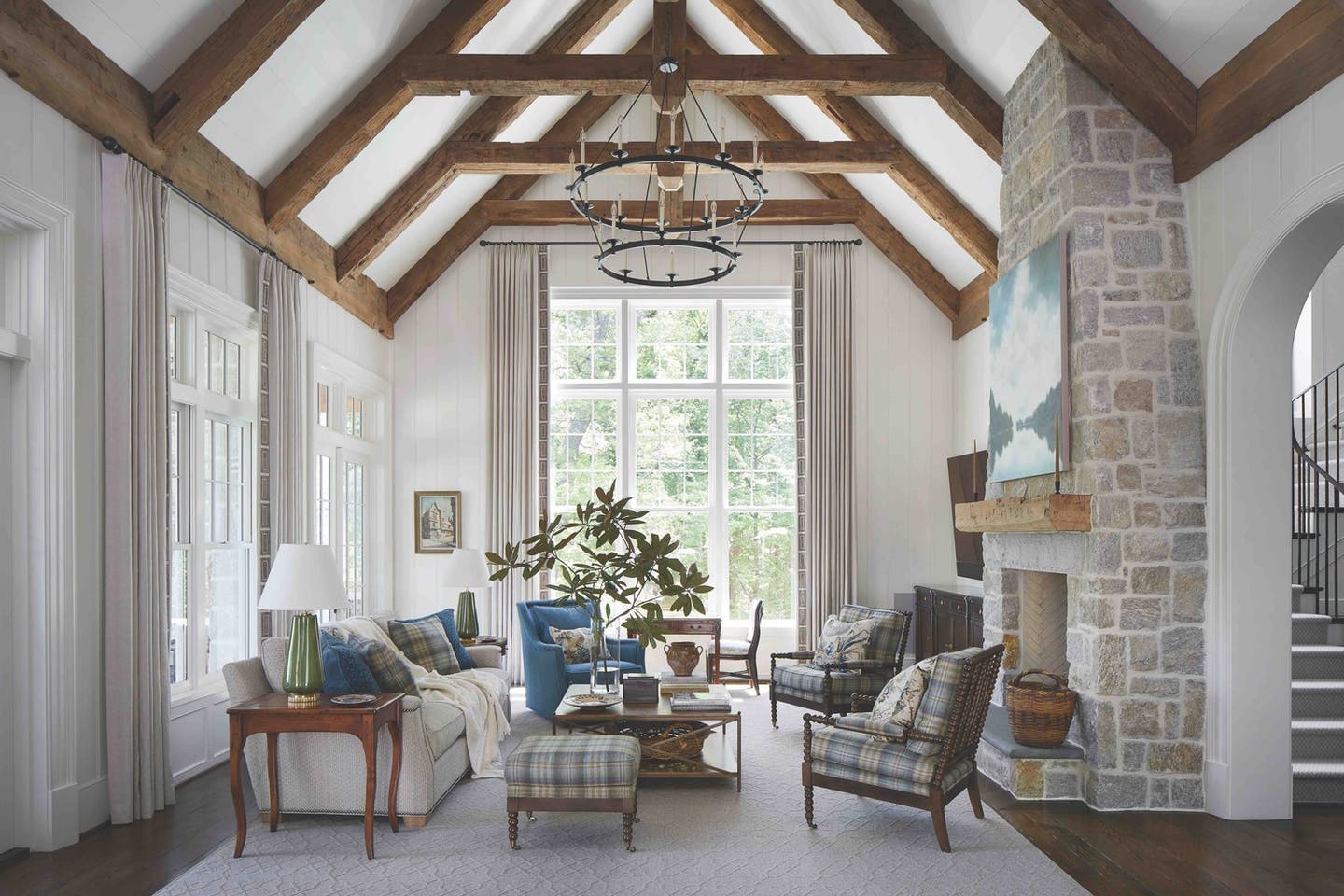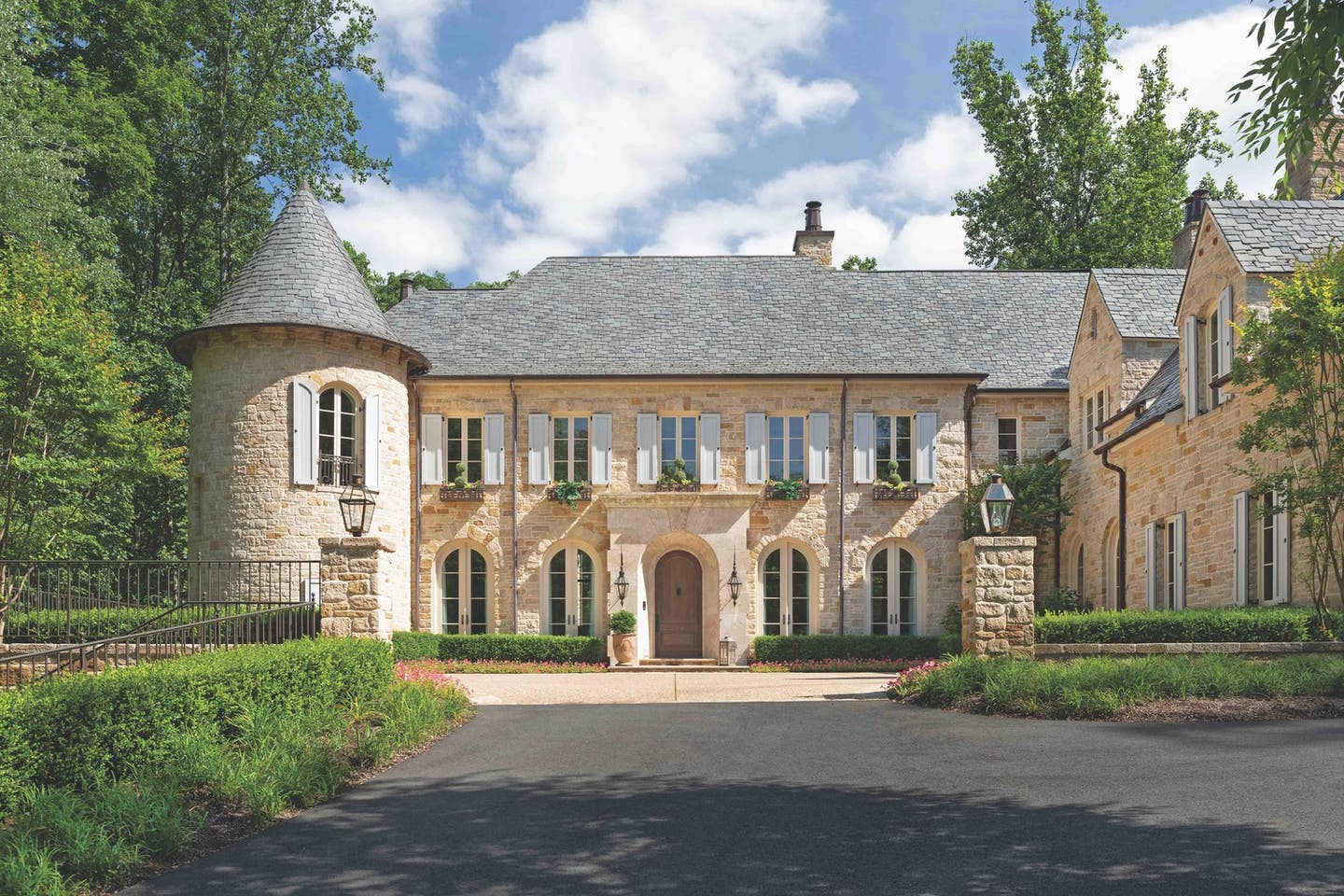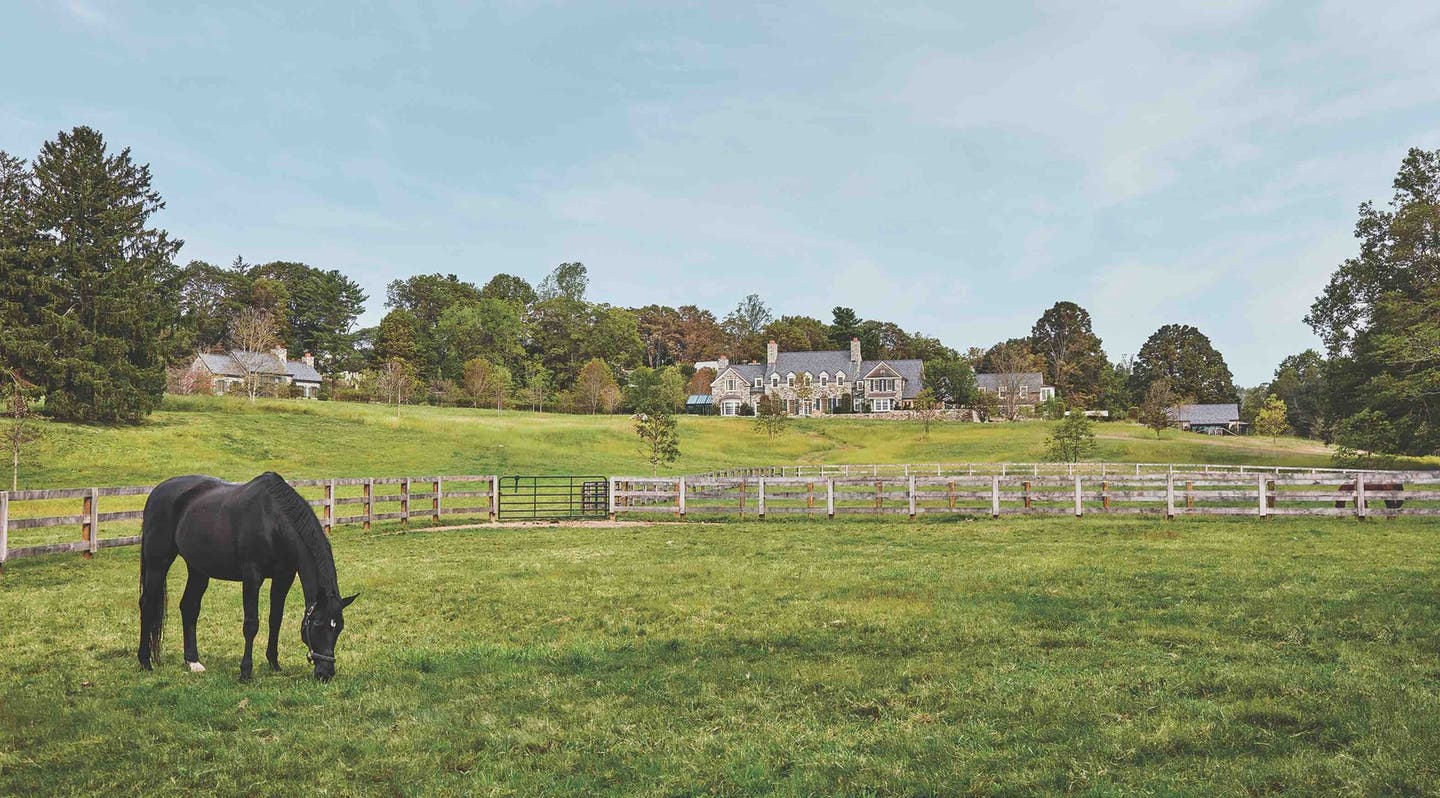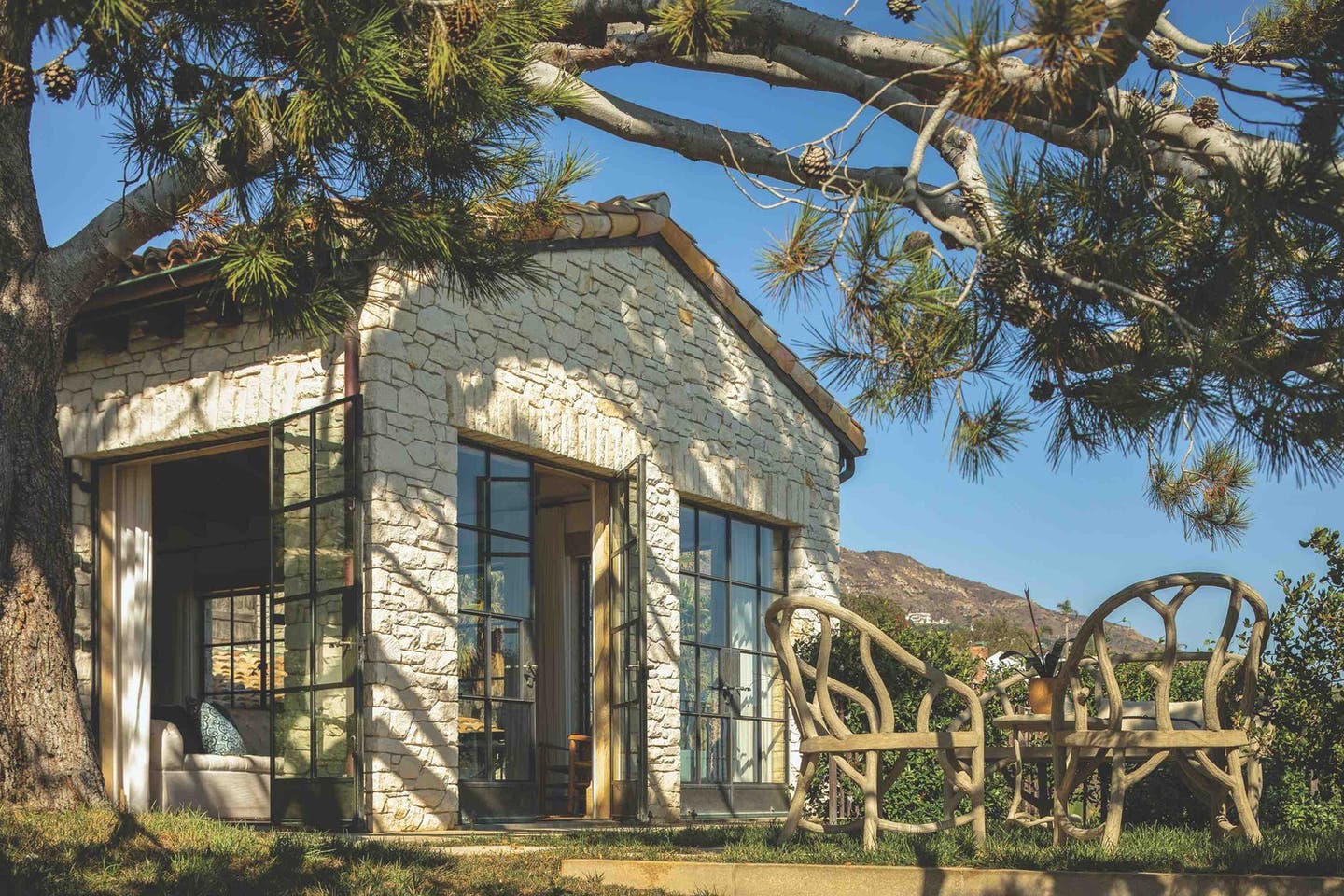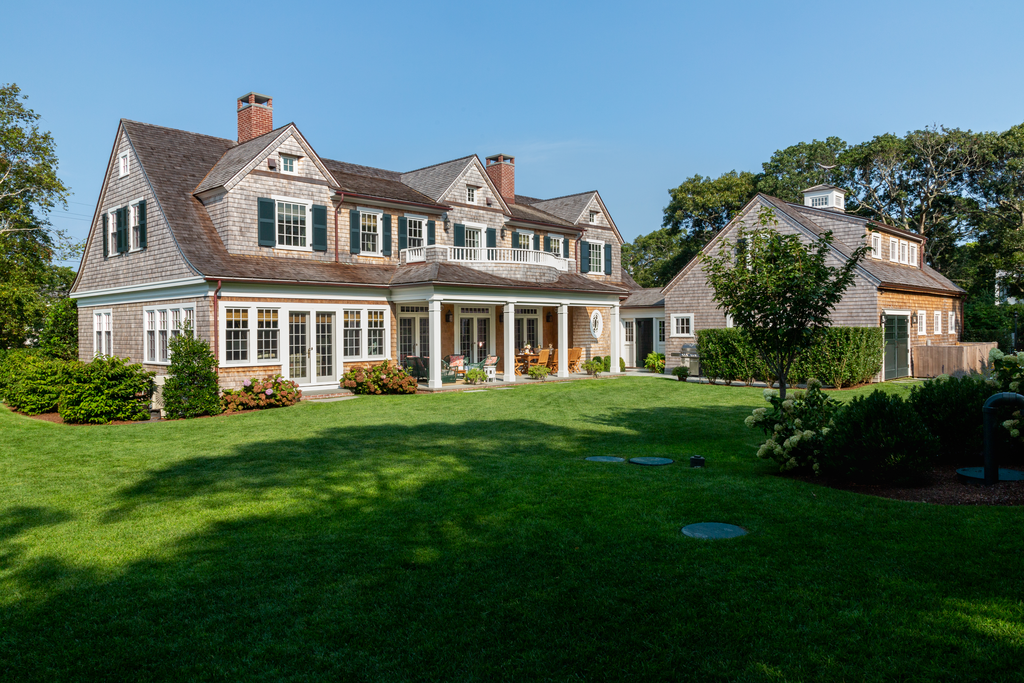
Projects
Vineyard Shingle Style
On the north end of Martha’s Vineyard, in the summer colony of West Chop, there’s a brand-new house with a very old soul.
Designed by Patrick Ahearn Architect, the family retreat in Tisbury, Massachusetts, for a couple with two young children was more than a decade in the making.
“The clients met at the West Chop Club,” says Patrick Ahearn FAIA, whose firm has offices in Boston and Edgartown. “They bought the vacant land and held onto it for years while they were planning their dream home, a place where they can create new memories.”
The clients, who had restored a carriage house in Saratoga, New York, where they live the rest of the year, commissioned Ahearn to design the homestead to look as though it were a 1920s cottage that had evolved and expanded through the century.
This home-grown feel comes from Ahearn’s strategic siting of the structures. Thus, the cupola-crowned carriage house in the back yard connects to the main house via a small, subtle wing, a concept that suggests it was added to the property later and that decreases the overall massing.
“We wanted to make sure that every aspect of the interior and the exterior captured the essence of the West Chop experience and that everything you touch and feel tells the story of the house over time,” Ahearn says.
What Ahearn calls the “new-old house aesthetics” start with West Chop’s signature Shingle-style architecture.
“The rake boards and corner boards are not white, and they are made of shingles,” he says, adding that the style allows for a more “playful” placement of shingles. “And the roof on the gable ends swoops like a grande dame welcoming you into the community.”
Other exterior details—the small, recessed clerestory window in each front gable that produces what Ahearn calls a “nice shadow line,” the oval window in the powder room that overlooks the back yard, the authentic wooden shutters with the shutter dogs, the wide, curved balcony outside the second-floor bedrooms and the copper gutters and downspouts—bring out the best of the past.
The house, which has water views, announces itself discreetly. A curved bluestone and granite pathway, virtually hidden by a privet hedge, leads to a portico that has double square columns. The front door is defined by a transom and sidelights.
“The wooden screen door clunks when you close it, adding to the old-house feel,” he says, delightedly. “So does the one on the back door.”
One of the house’s most inviting features is the back porch: Wide and welcoming, it is designed for sitting and relaxing as well as for entertaining. As with the rest of the house, there is no recessed lighting. Night-time illumination comes from lanterns, sconces, and ceiling fixtures.
The interior spaces, most of which are painted Ahearn White (a Benjamin Moore custom mix developed by Ahearn that’s 50 percent Linen White and 50 percent China White), convey cottage charm through millwork on the walls and beams on the ceilings.
“It’s an open-plan layout,” Ahearn says. “The spaces, which all have wide-plank oak flooring, flow together. We created portals—wide doorways, all of the same height and width—that lead from one space to the other. They are the spines that take you through the sequential rooms.”
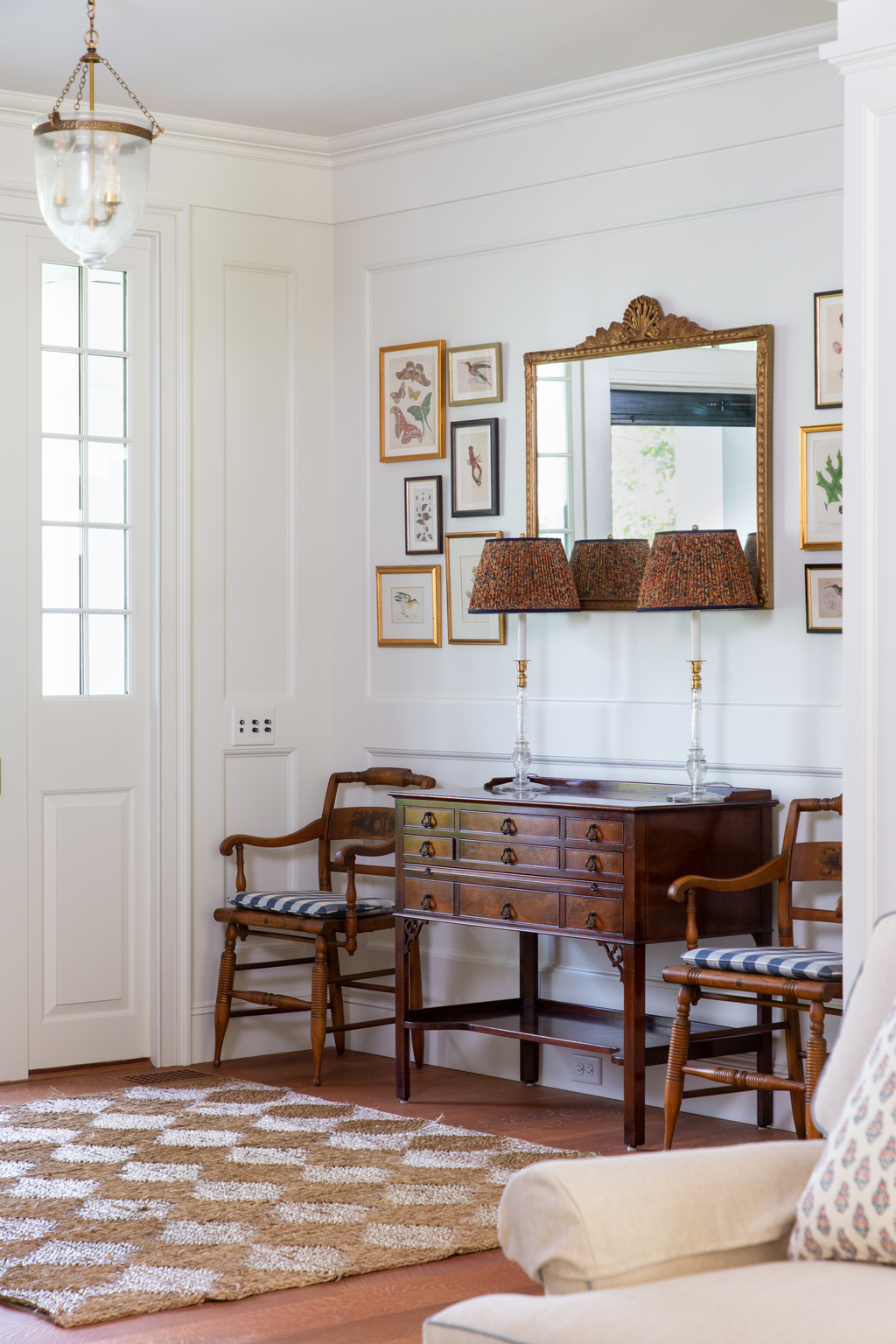
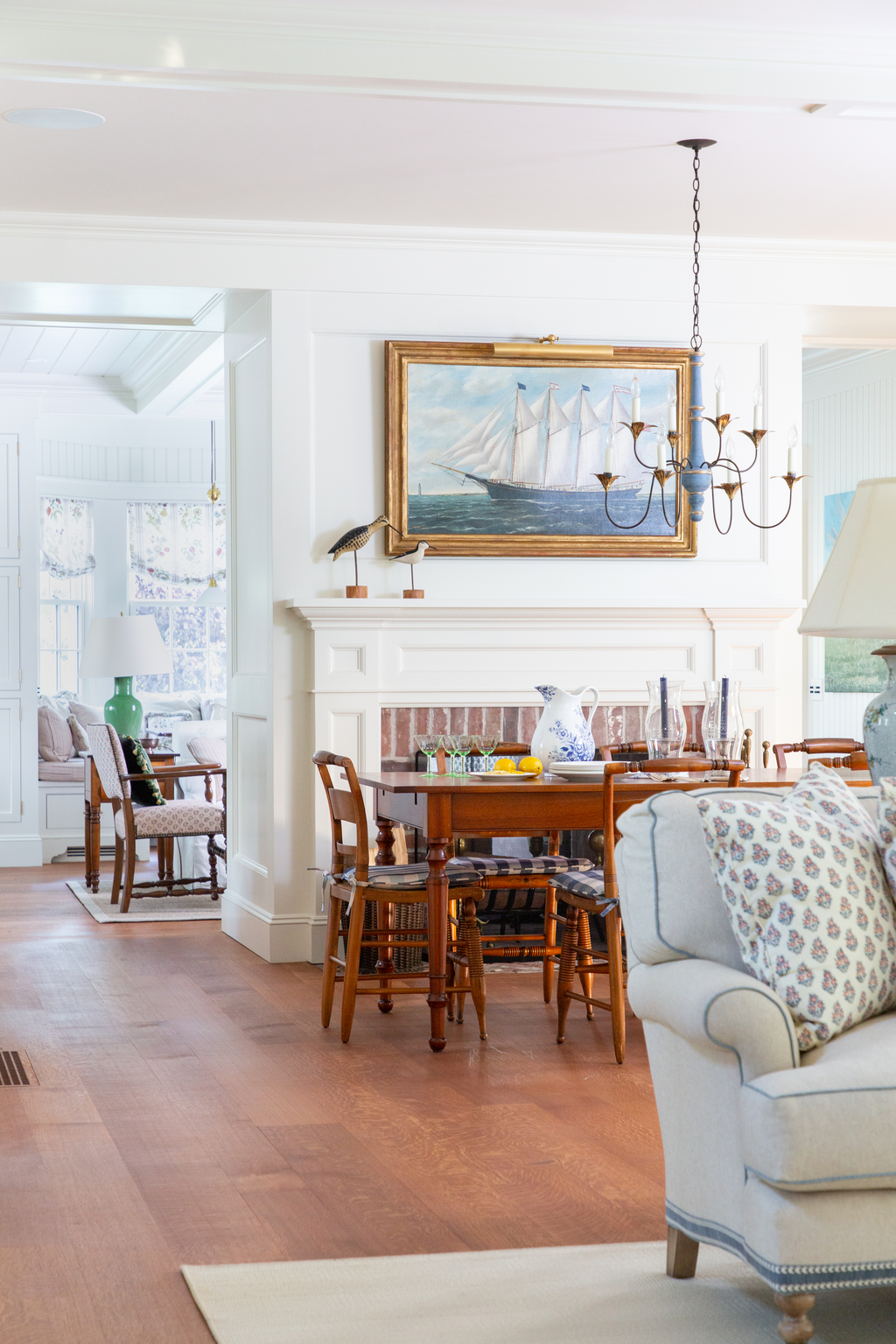
Nooks and niches, including window seats, add to the cottagey charm. In one such windowed space off the first-floor family room, a built-in desk with a mahogany top and open shelves creates a cozy home office or homework station.
The transition of time is most noticeable, by design, in the study/porch, which is painted a cozy blue to encourage fireside family gatherings in wintertime. “We made it look as though it was a screened-in porch that had been converted, at a later time, to an enclosed space,” Ahearn says, adding that the effect is enhanced by its exposed floor joists overhead.
It is the details that date the house in such a pleasing manner. In the kitchen, for example, the central island sports a mahogany countertop—a nod to traditional furniture—and the custom cabinets are appointed with beaded millwork, furniture-like legs that conjure up old-fashioned cupboards, and antique brass hardware. And in the first-floor powder room, the sink is fashioned out of an antique washstand and topped with new ogee-edge Carrara marble.
The clients, Ahearn says, are “ecstatic because the home captures all of their imagination and then some.” So was at least one member of the tight-knit community. “One of the neighbors sent me a note saying that ‘you really captured the architecture of West Chop, and that’s not something many architects can do.’”
The timeless quality of the residence, he adds, will make it a gathering spot for generations to come.
He says its real legacy, however, lies in the fact that it illustrates “how historically motivated architecture can convey how people live today.”



